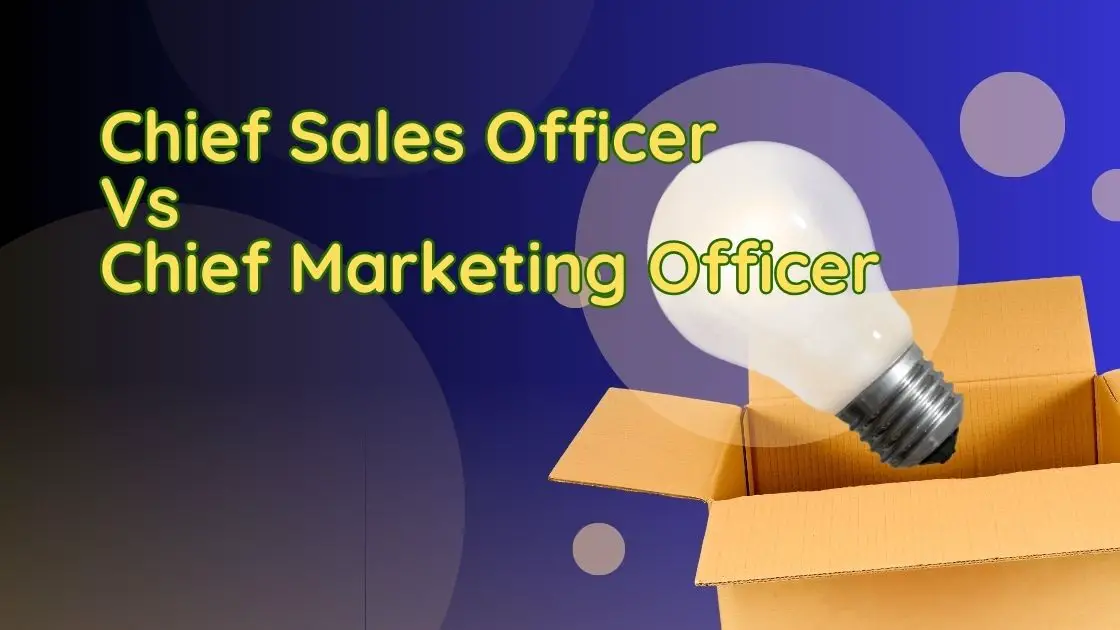Point of purchase (POP) is a key idea in retail and in-store marketing. It’s the spot where promotional activities for consumer products happen. This spot can be in a physical store or online, and it’s very important for attracting customers and making them buy things.
The big deal about POP marketing is how it uses items like signs, displays, and packaging. These are made to look good and draw in shoppers. They tell the store’s story, show off deals, and help people remember the brand.
Think of a POP display as a way to introduce a new product in a cool way. It could be a simple setup on a shelf or a fun digital thing people can interact with. By using smart POP techniques, stores can make their brands stand out and sell more.
Key Takeaways:
- POP is where stores do their promotions, both in physical and online shops.
- Stuff like signs and displays are key for making shopping feel special and inviting.
- Great POP displays grab attention, share brand stories, and show off what’s on sale.
- Using new and clever POP ideas can make brands memorable and boost sales.
- POP is super important for marketing in stores, making the shopping experience better, and drawing in customers.
Understanding Point of Purchase
Today, Point of Purchase (POP) is very important in marketing. It Matters a lot for both physical and online stores. Marketers aim to show off their products to grab customers’ attention. Point of Sale (POS) systems are key for a great POP experience for buyers.
POS systems take care of payments and transactions. They are computer-based and work with printers, barcode scanners, and touch screens. This helps retailers run things smoothly and makes checkout easy for customers.
By connecting POS systems with other tech, retailers can make their POP better. For example, barcode scanners quickly get product info, making shopping smooth. Touch screens let customers try out products interactively, showing different features.
The Role of POS Systems in POP Marketing
POS systems do more than handle sales. They give data that helps shape marketing plans. Retailers learn what customers like and their shopping habits. This helps them offer products and deals that match what people want.
With POS systems, retailers can see how well their marketing works. They can track sales from promotions or loyalty rewards. This data helps them tune their marketing, making it more effective and personal for shoppers.
POS systems are getting better, offering new ways to attract customers. Contactless payments make buying faster and easier. POS integration with online stores offers a fluid shopping experience, online and off. This helps stores draw in more customers.
Mastering POP is key for retailers wanting to stand out. By using POS systems and new tech, stores can provide a unique shopping trip. This draws in and keeps customers.
POS Innovation
Point of Sale (POS) systems have changed a lot to meet the needs of different industries. Today’s POS systems are very flexible and can work with other software. This makes them more useful and efficient.
Cloud-based POS systems are a big leap forward. They are popular with online stores because they cut costs and work well with other parts of a business. These systems let store owners see sales and inventory in real time, from anywhere. This helps make fast decisions and keeps things running smoothly.
POS technology now offers contactless payment options. This is important because more people are using digital wallets and phone apps to pay. POS systems make these kinds of payments easy and safe for customers.
POS technology is also moving outside of normal stores. Things like e-commerce tools and mobile POS apps have changed how we shop. These changes help businesses take payments and handle sales online. This makes shopping easier and more fun for everyone.
Advantages of POS Innovation
The new POS systems bring many benefits to businesses:
- Enhanced Efficiency: POS software does tasks like keeping track of inventory and reporting sales by itself. This makes businesses run better and cuts down on mistakes.
- Better Customer Experience: Contactless payments and shopping online make buying things faster and more convenient. This makes customers happier.
- Real-time Insights: Cloud-based POS systems give store owners up-to-date information. This allows them to make smart choices and improve their business.
- Flexibility and Scalability: POS systems can be changed and grown to meet a business’s specific needs. They adapt well to new challenges and expansion.
- Improved Security: POS systems use secure payment methods and encryption to keep customer information safe. This helps prevent fraud and theft.
There’s a strong effort to make POS technology better, aiming to help stores and their customers. By using cloud-based systems, offering contactless payments, and providing online shopping, businesses can improve how they work. This keeps them competitive in a fast-changing retail world.
POP vs. POS
Point of purchase” (POP) and “point of sale” (POS) might sound similar, but they’re different. POP is everywhere in the store, where customers decide to buy. It includes sales and displays to catch their eye. POS is where customers pay, focusing on the business side. It handles the money and keeps things running smoothly.
Key Differences Between POP and POS
Let’s dive into what makes POP and POS different from each other:
Point of Purchase (POP)
- Encompasses the entire store and promotional activities
- Focused on influencing purchase decisions
- Aims to engage and capture customer attention
- Includes visual merchandising and sales promotion techniques
- Enhances the overall customer experience
Point of Sale (POS)
- Occurs at the moment of transaction completion
- Handles payment processing and business operations
- Involves cash registers and POS systems
- Tracks inventory, sales, and customer data
- Enables efficient and seamless transactions
Knowing the difference between POP and POS helps businesses. They can attract customers while also making sales smooth.
POP Marketing and POS Systems
POP and POS play different roles but work together in retail. POP uses cool displays and activities to get customers excited and buying. POS makes sure they can pay easily and keep the store organized.
Smart retailers use both POP marketing and POS systems. They create a shopping experience that’s smooth and fun for everyone.
| POP | POS |
|---|---|
| Encompasses the entire store | Focuses on transaction completion |
| Aims to influence purchase decisions | Handles payment processing and business operations |
| Utilizes visual merchandising and sales promotion techniques | Involves cash registers and POS systems |
| Enhances the overall customer experience | Tracks inventory, sales, and customer data |
Benefits of POP marketing for retailers
POP marketing brings many benefits to retailers. It’s a great way to boost sales and make brands more visible. Let’s dive into the main perks:
Cost-Effective and Easy Implementation
POP marketing is both cheap and simple to use. Retailers can make POP displays with low-cost materials. This means they can try out different strategies without spending a lot. They can change their approach based on what customers like and the latest trends.
Niche Targeting and Increased Brand Identification
With POP marketing, retailers can focus on specific groups of customers. They can make displays that catch the eye of these groups and show why their products are special. This builds a strong brand identity, helping to create a loyal group of customers.
Enhanced Customer Experience and Increased Sales
Amazing POP displays can make shopping better for customers. If displays are eye-catching and placed well, they can grab attention. This makes shopping fun and can convince customers to buy, increasing sales.
Improved Product Visibility and Promotions
POP marketing is great for showing off products and deals. Attractive displays can focus on specific items or great offers. This makes customers feel like they need to buy now, influencing their decisions. It also brings more people into the store.
Increased Customer Engagement
POP marketing lets retailers make displays that people want to interact with. Adding things like touch screens or QR codes can grab customers’ attention. This makes shopping more fun and helps customers feel good about the brand.
Using POP marketing is a smart move for retailers. It’s an affordable way to draw in customers, boost sales, and make the brand stand out. By creating displays that make shopping memorable, retailers can encourage customers to buy more and stay loyal.
| Benefits of POP Marketing for Retailers |
|---|
| Cost-effective and easy implementation |
| Niche targeting and increased brand identification |
| Enhanced customer experience and increased sales |
| Improved product visibility and promotions |
| Increased customer engagement |
Types of POP displays
POP displays vary in form for different impacts and uses. Retailers can pick from a range to best showcase their products. This choice helps grab customer attention effectively.
Temporary POP displays
These are meant to catch eyes quickly and can be changed easily. Made from cheap materials like cardboard, they’re great for special deals or seasonal items. Retailers find them simple to set up for an instant, attractive look.
Semi-permanent POP displays
Semi-permanent displays last longer and often appear on shelves or near cash counters. They are made from hardier materials such as acrylic or wood. This makes them a solid option for a tidy, appealing product arrangement that tempts customers.
Permanent POP displays
Permanent displays are fixtures designed to stay for a long time. They established a branded, consistent shopping vibe. Tailored to a store’s look, they showcase products well, strengthening brand recognition and boosting visibility.
Digital POP displays
Digital displays use tech to present ads or videos. They can be interactive, offering a lively experience. With tools like digital signs or touch screens, retailers convey product details or promotions effectively. These displays’ content is easy to update, offering marketing adaptability.
Robotic POP displays
Robotic displays bring automation and interaction. Featuring movements and interactive features, they provide entertainment. Retailers use these to leave a lasting impression, attracting and engaging customers.
Knowing the types of POP displays aids retailers in picking the right ones. This choice is crucial for promoting products, enhancing brand presence, and increasing sales.
Examples of POP marketing
Top brands use creative POP marketing to stand out. Here are ways they connect with their audience and boost their brand:
Nesquik Hopscotch Game Floor Display
Nesquik uses a hopscotch game as a unique floor display. It’s not just eye-catching for kids, but also fun. This experience makes kids link fun times with Nesquik, increasing sales chances.
Pepsi Inflatable Helmets during Superbowl Season
During the Superbowl, Pepsi uses inflatable helmets to draw attention. These displays connect Pepsi with sports and add to the festive mood. It encourages people to buy Pepsi as they watch the game.
Sherpa Interactive Prayer Wheels
Sherpa brings adventure and spirituality to their marketing with prayer wheels. Customers can engage with these displays on a deeper level. It makes shopping unforgettable and matches Sherpa’s brand values.
Jagermeister Neon Signs in Bars and Pubs
Jagermeister sets its brand apart with neon signs in bars. These bright signs draw your eye and create a unique identity. By choosing the right locations, they boost their brand’s presence.
Barilla Spot the Difference Game
Barilla gets people interacting with a spot the difference game. This display makes customers curious about different pasta flavors. Having fun with the game may lead them to try and buy more.
Innovative POP marketing like these examples captivates customers. It boosts brand visibility and drives sales.
How to calculate the ROI for POP marketing
It’s crucial to know the return on investment (ROI) for POP marketing. This tells you if your promotional efforts are working. By learning how your POP campaigns affect finances, you can improve your strategies and increase sales.
Step 1: Compare Investment Costs to Actual Product Sales
First, figure out your total costs for the POP campaign. Costs include design, production, placement, and any fees. Then, look at the product sales resulting from the campaign. This comparison shows the financial success of your investment.
Step 2: Gross Margin ROI (GMROI)
Another metric to check is the Gross Margin ROI (GMROI). This considers the sales made and digs into the cost of goods sold (COGS) and inventory management. The GMROI formula is:
GMROI = (Gross Margin / Average Inventory Cost) x 100
With GMROI, you assess your POP marketing’s profitability by looking at gross margin and inventory control.
Step 3: Consider Seasonal Factors and Discounts
Remember, seasonal changes and discounts influence ROI for POP marketing. Holidays or specific seasons can boost sales. Discounts might change how customers buy. Factoring these in helps you grasp the real ROI of your POP campaigns.
Step 4: Monitor POP Marketing Performance
Keeping an eye on your POP marketing’s results is key for bettering your strategies and sales. Watch for sales trends, customer engagement, and conversion rates. Use this data to spot insights and areas to enhance. A focused, data-based strategy leads to greater POP marketing success.
Calculating ROI for POP marketing is a continuous task that needs attention and updates. Always evaluating and tweaking your strategies with data can boost your POP campaigns’ impact and drive significant business growth.
Example Table: ROI Calculation for POP Marketing
| Investment Costs | Actual Product Sales | ROI (%) |
|---|---|---|
| $10,000 | $50,000 | 400 |
| $20,000 | $80,000 | 300 |
| $15,000 | $45,000 | 200 |
For instance, the ROI for the first campaign is 400%, the second is 300%, and the third is 200%. By comparing costs to sales, we can see how effective each campaign is. This helps us make smart decisions for future POP marketing work.
Tips to improve POP marketing performance
To make your POP marketing work better, consider several tactics. Use targeted campaigns, discounts, and product trials. Also, pick bright colors, creative displays, and cross-selling methods. Keeping track of what works and trying new things are key. They help you find what clicks with your products and customers.
Targeted Campaigns Based on Festivals or Events
Linking your POP marketing to special events can boost interest. For instance, Halloween promotions will draw people in. This can lead to more spontaneous buys.
Incorporate Discounts in Displays
Discounts at your POP displays can push people to buy. Show off price cuts or special deals clearly. This draws eyes and can motivate purchases.
Allow Product Trials
Adding sample opportunities is smart for POP marketing. Free samples or demos let customers try before they buy. This increases the chance they’ll buy.
Use Vibrant Colors
Bright colors make your POP displays pop. Choose colors that fit your brand and the right mood. Color psychology can boost sales by affecting perception.
Get Creative with Displays
Don’t stick to the usual with your displays. Use unexpected materials or designs. Cater to your audience’s likes for memorable impacts.
Implement Cross-Selling Strategies
Boost your POP marketing with cross-selling. Show products that go well together. For instance, place camera accessories next to cameras to raise sales.
Conclusion
POP marketing greatly boosts a retailer’s success. It uses different POP displays to sway buying decisions and improve store conversions. This creates a memorable brand experience.
Understanding how to calculate the ROI of POP marketing is key. Retailers should watch their sales closely. They should check how much they spend versus what they earn. This helps in fine-tuning their marketing methods.
Retailers should try new approaches to grab customer attention. Offers like discounts, product trials, and eye-catching displays can make shopping more fun. Keeping an eye on what works best will help stores pick the right marketing moves for their audience.



